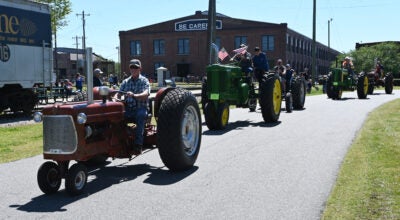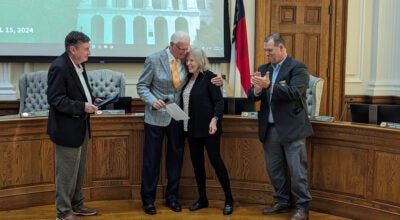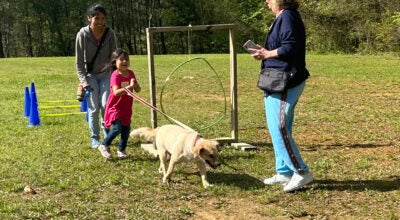AAA offers winter driving tips
Published 12:00 am Thursday, January 17, 2013
AAA Carolinas urges motorists to stay off the highway during icy and snowy conditions unless the trip is absolutely necessary.
Increase your following distance from 3-4 seconds to 8-10 seconds. On dry pavement at 20 mph it takes about 20 feet to stop. On ice-covered roads at 25 degrees, it takes 145 feet to stop – seven times further. Keep your speed appropriate to the needed stopping distance.
Brake gradually with steady pressure on the brake. If you begin to skid, steer in the direction you want to go. If you do not have anti-lock brakes, gently depress the brake pedal. Do not slam on your brakes; it can cause you to lose control. If the brakes lock, release the brake and gently brake again while keeping your heel on the floor. This is known as “threshold braking.” Depress brake pedal again and repeat process until you regain control.
If you have anti-lock brakes, keep the brake firmly engaged, since the brakes will not lock up. Remember that the kickback from the pedal is the braking mechanism releasing and rebraking in milliseconds.
Be especially wary on hills. Observe how other vehicles are reacting. Build momentum at the bottom of the hill and reduce speed when cresting the hill.
On snowy four-lane highways, stay in the most recently cleared lane. Avoid changing lanes because of potential control loss when driving over built-up snow between lanes.
Avoid using cruise control in slick or snowy conditions.
Be careful crossing bridges and overpasses as these freeze before the regular roadway.
Traction is greatest right before the wheels start to spin. Press gently on the accelerator and use a higher (second or third) gear when first getting started.
Wear sunglasses during the day as glare may increase when reflected off of ice and snow.
At stoplights or intersections watch out for polished or packed snow, which can make halting more treacherous. Heavy-footed drivers also spin their tires when starting, which worsens the problem. If possible, stop or start safely on a slightly different line. Fresh snow or less polished areas almost always offer better traction. Slow down sooner and gradually when approaching an intersection to allow yourself more time to react.
Keep your lights on. Using your headlights improves visibility, both yours and other drivers.
Take the time to have your battery’s charge and cold cranking amps checked.
Check your battery’s connections for corrosion. When starting your car in the morning, turn on electricity first and wait 30 seconds for the battery to warm up before starting.
Keep your gas tank at least half full to avoid freezing gas lines.
Thinner grades of oil are better for colder weather; opt for 5W-30 over 10W-30.
Check tire pressure every one to two weeks as low temperatures can reduce tire pressure and will limit control on slick roads.
Never use wiper blades to clear ice or frost as this damages the blades. Use a scraper or can de-icer. Make sure all windows are clear for best visibility.
Never warm up your car in a closed garage; carbon monoxide poisoning is possible. In some counties, it is illegal to warm up a car parked on public streets when the driver is not in the car.
Keep an emergency kit in your car. Make sure it includes a mobile phone, car charger, blankets, flashlight with extra batteries, a first aid kit, drinking water, a small shovel, a sack of sand or cat litter for traction, windshield scraper, battery booster cables, emergency reflectors and non-perishable snacks.
During winter weather conditions, AAA service could be hampered and AAA’s emergency road service may be limited to circumstances where someone is in imminent danger or a dire situation.
AAA Carolinas, an affiliate of the American Automobile Association, is a not-for-profit organization that serves more than 1.8 million members and the public with travel, automobile and insurance services while being an advocate for the safety and security of all travelers.
Connect with AAA Carolinas on Facebook at www.Facebook.com/AAAcarolinas and follow us on Twitter at @AAAcarolinas.





